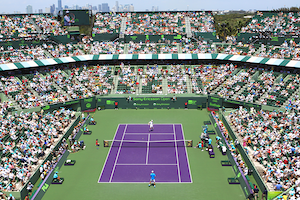 For as long as I live, when I think of the red clay at Roland Garros, the picture that will always come to mind is that of Brazilian Gustavo Kuerten tracing the contours of a heart on the ground after his grueling five sets win over Swede Magnus Norman in the 2000 French Open final.
For as long as I live, when I think of the red clay at Roland Garros, the picture that will always come to mind is that of Brazilian Gustavo Kuerten tracing the contours of a heart on the ground after his grueling five sets win over Swede Magnus Norman in the 2000 French Open final.
Bar none, clay is the most demanding surface to play on. The points can be endless. A men’s three set match can last longer than three hours. Thus, that type of court can exact a significant mental and physical price. Ironically though, clay is much gentler on the body than a hard court where joints can be prone to injury. Despite the clay presenting some significant health benefits, the list of players who excel on that specific turf is far shorter than that of those who perform well on hard court. Therefore, the question must be posed as to the source of this disconnection.
One explanation may be the competitors’ lack of familiarity with the surface. The majority of Americans and non- Iberian Europeans nowadays grow up playing on concrete. Red clay practice courts and tournaments have become a rarity in the U.S. Currently, the ladies have a choice of either Charleston or Jacksonville; many have characterized both as “simulated clay”. Players have described the green surface as a hard court dusted with clay which makes their movement feel awkward. For the men, their only option is the U.S. Clay Court Championships in Houston. Although it is more suitable than what’s available to the women, in many respects it falls short of the necessary requisite to offer a full fledge European red clay experience.






